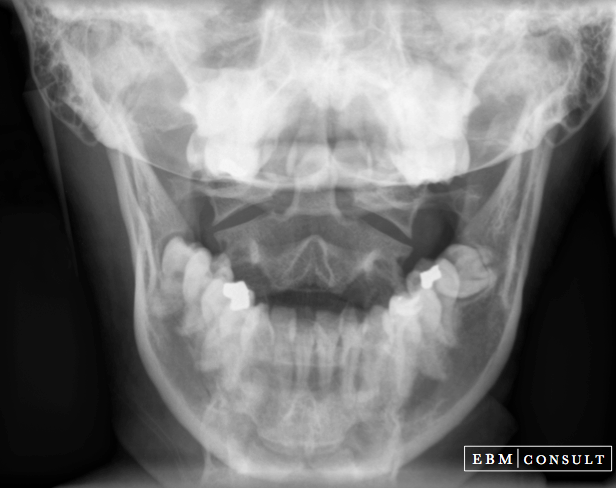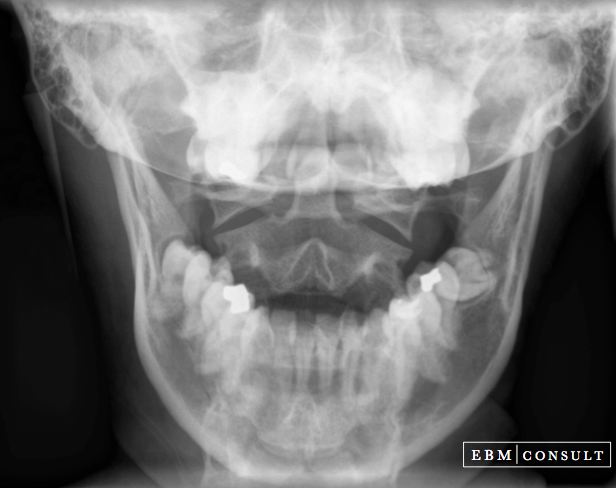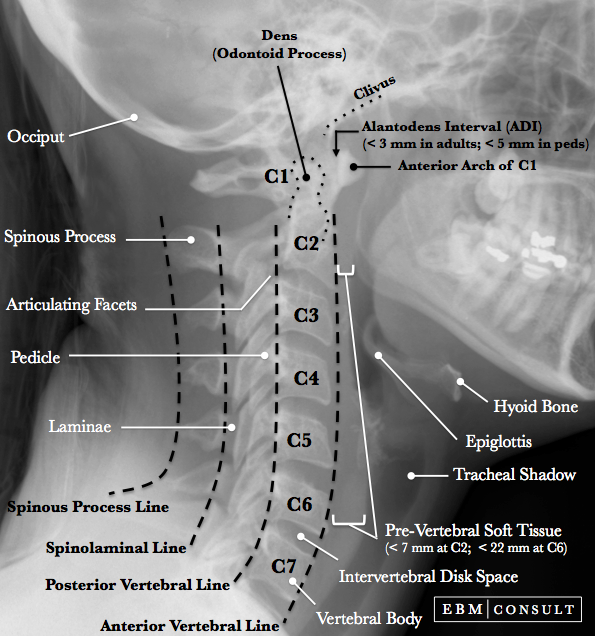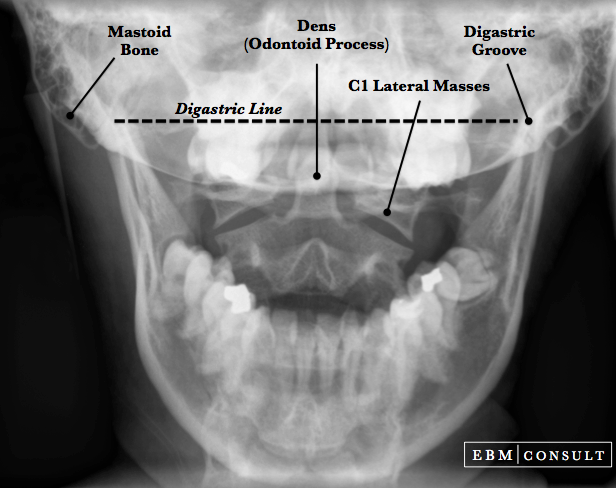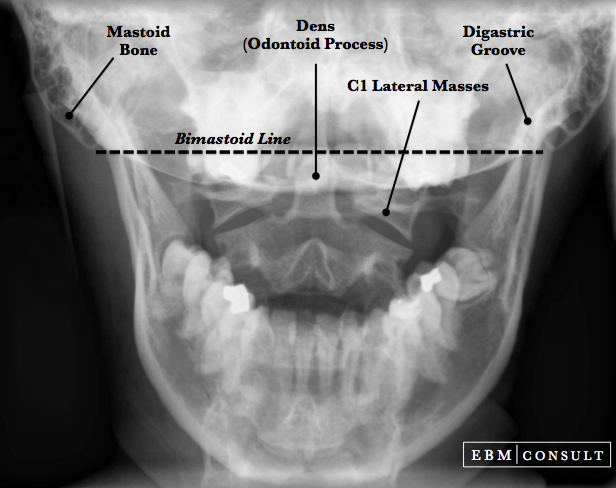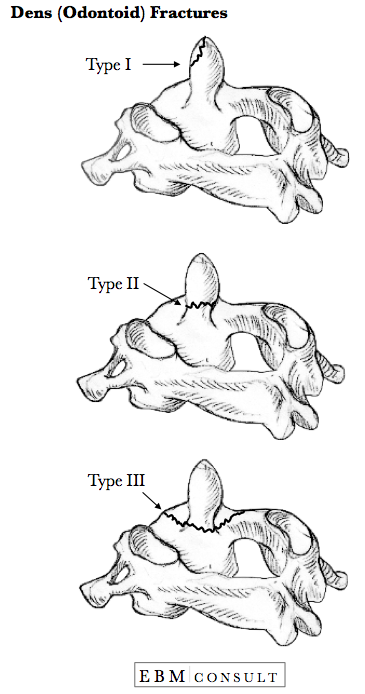Open Mouth Odontoid Radiograph
Summary:
The open mouth odontoid radiograph (x-ray) is used to assess for the presence of an upper cervical spine injury. Common injuries to the upper cervical spine include:
- Dens Fracture (i.e., C2 Odontoid Fracture)
- Jefferson's Fracture (i.e., C1 Burst Fracture)
- Transverse Ligament Injury
- Basilar Invagination
Being able to read and recognize common landmarks when interpreting an open mouth odontoid view is important in determining who has an unstable condition that may warrant more aggressive intervention. Below are some common things to consider when reading these radiographic images.
Note About Images: Scroll or place cursor over the images below to see the landmarks and labels you need to be able to identify.
Editors:
- Anthony J. Busti, MD, PharmD, FNLA, FAHA
- Dylan Kellogg, MD
Last Updated: August 2015
Open Mouth Odontoid Xray
|
|---|

